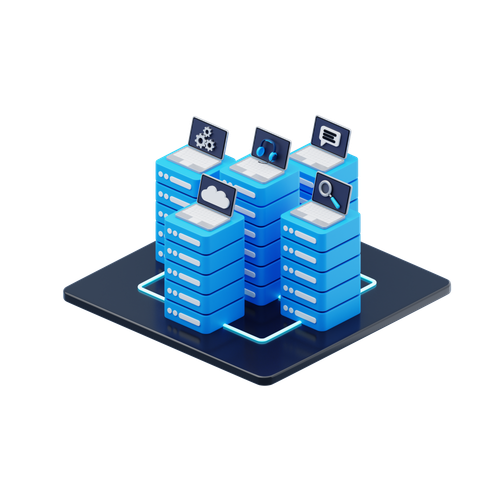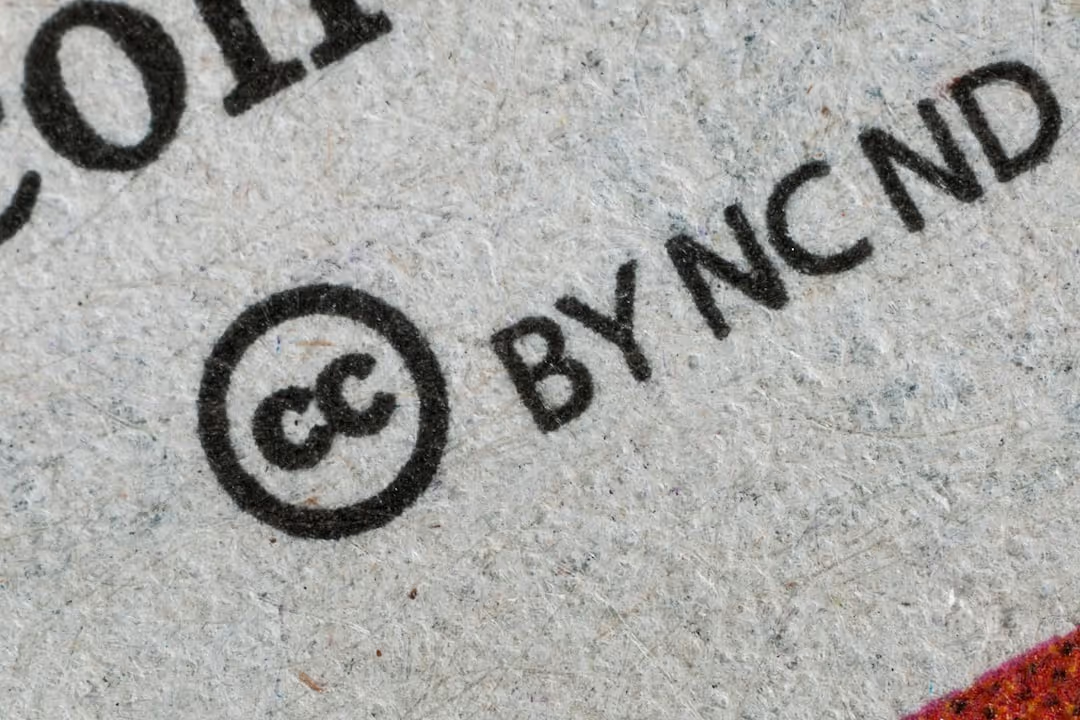
Best Prior Art Search Software for 2026: AI Tools and Enterprise Platforms Compared


How do patents and copyrights promote innovation? R&D teams, product developers, scientists, commercialization engineers, and senior directors have discussed the potential impact of patents and copyrights on innovation. Can we determine if these intellectual property frameworks are successful in encouraging the production of novel concepts or technologies?
In this blog post, we will explore what patents and copyrights are as well as their potential benefits to innovation. We’ll also look at some of the challenges posed by patent and copyright systems before examining alternative approaches to stimulating creativity within research and development teams. Let’s answer: how do patents and copyrights promote innovation?
Table of Contents
What Are Patents and Copyrights?
How Do Patents and Copyrights Promote Innovation?
Challenges With Patent and Copyright Systems
Alternatives to Patent and Copyright Systems
how do patents and copyrights promote innovation? Patents and copyrights are two kinds of legal safeguards for intellectual property.
A patent provides the possessor with a lawful right to produce, utilize or vend an innovation for a limited timeframe. Copyrights protect original works such as literary, dramatic, musical, artistic, and other creative works from unauthorized copying or reproduction.
A patent is a form of intellectual property right that grants the inventor exclusive control over their invention, prohibiting others from making, using, or selling it without permission. Copyrights safeguard unique creations, such as literary works, sound recordings, artworks, and sculptures, from being replicated without the copyright proprietor’s authorization.
Utility, design, and plant patents are the three main types of patent protection available. Copyright can be divided into five categories: literary works, musical compositions, visual arts, audio-visuals, computer software programs/apps, and sound recordings, among others.

(Source)
Patent and copyright systems provide economic benefits to society at large, as these protections encourage investment in research and development activities leading to new products and services. This creates jobs and stimulates growth within markets.
Legally protecting the owners of intellectual property, patents, and copyrights enable them to gain monetary benefits from their inventions. This provides a powerful incentive for inventors and creators, which in turn promotes innovation. Moving on, let us now explore how patents and copyrights can promote innovation even further.
Patents & copyrights provide economic benefits to society by encouraging R&D investment in new products, services & jobs. #Innovation #IPRights Click to Tweet
Patents and copyrights are powerful instruments for stimulating innovation. They do this by safeguarding intellectual property rights to encourage creators to invest in research and development and produce new products or services.
By protecting intellectual property rights, they provide an incentive for creators to invest in research and development and create new products or services. Patent systems protect inventions from being copied by competitors. Copyrights protect original works such as books, music, films, software, etc. from unauthorized use or reproduction.
Patents and copyrights safeguard creators’ ideas by granting them exclusive legal rights over their inventions or work for a set duration. This provides a sense of security to creators, allowing them to receive their due compensation for the effort they have put in and encouraging further investment into research and development. It also encourages investment in R&D since companies know they won’t be undercut by copycats stealing their ideas.
Investors can have greater confidence when investing in innovative startups due to the legal protection afforded by patents, reducing the risk of another company copying the idea without authorization. Patent systems provide inventors with financial security and enable them to take risks on R&D projects knowing that if successful they will be able to capitalize exclusively on their work, something not possible with open-source models where anyone can access it freely without permission or recompense.
Patents and copyrights can be seen as incentives to foster creativity since they secure intellectual property rights while also motivating investments in research and development. Despite their advantages, the patent systems and copyright systems have certain drawbacks that must be addressed to ensure they are used optimally.
Key Takeaway: Patents and copyrights serve as a safeguard, safeguarding creators’ intellectual property from misappropriation, thereby encouraging them to invest in R&D. This offers a safeguard to creators financially, as well as instilling trust in investors when looking at investing in new enterprises. As such, patents and copyrights play an important role in promoting innovation.
How do patents and copyrights promote innovation? Patents and copyrights can be powerful instruments for safeguarding intellectual property rights, yet they may present a range of difficulties. The process of obtaining patent or copyright protection can be lengthy, costly, and offer a limited scope of protection.
The first challenge is the length of time it takes to obtain a patent or copyright. Obtaining a patent or copyright can be a lengthy endeavor, taking months or even years to complete depending on the complexity of the invention or work. Filing fees and other necessary paperwork may be required to attain a patent or copyright, with costs varying based on the complexity of the protected invention/work.
Another issue is cost. Obtaining a patent or copyright can be expensive due to attorney’s fees and other associated costs such as research expenses related to searching prior art databases for potential conflicts with existing patents/copyrights.
Furthermore, if an infringement occurs after securing protection then legal action must be taken which could result in further financial losses depending on the outcome of any court proceedings.
Despite their capacity to incentivize invention, there are various issues connected with patent and copyright regulations that may impede advancement. However, alternative methods such as open source licensing models, creative commons licensing models, and crowdfunding platforms for financing R&D projects offer viable alternatives which may be more suitable in certain contexts.
Key Takeaway: Securing a patent or copyright can be difficult and expensive, but it is necessary to preserve intellectual property rights. It may take months or even years for the protection to come through, with hefty filing fees and potential legal costs if infringement occurs down the line. Despite the challenges, patents and copyrights are still essential for preserving creativity in today’s highly competitive market.
Patent and copyright regulations have long been employed as the main methods for safeguarding intellectual property, yet they are not the only solutions available. There are alternative methods for promoting innovation that doesn’t rely on traditional patent systems or copyright systems.
Open source licensing models, creative commons licensing models, and crowdfunding platforms for financing R&D projects can all be used to incentivize creativity and innovation while protecting intellectual property rights.
Open-source licenses provide an effective way to protect software innovations without relying on patents or copyrights. These licenses let coders give out their code to others with some regulations, like permitting people to modify and share the code without restrictions but disallowing them from asserting authority over it. This encourages collaboration between developers while still giving them control over how their work is used.
Creative Commons licenses provide creators with a way to protect their works, such as music, art, literature, and others by specifying which uses of them are allowed. By doing so, these licenses ensure that creators maintain some level of control over how their works are used while still encouraging collaboration between artists in various fields.
Crowdfunding sites offer innovators and scientists a way to obtain financial aid for their ventures without surrendering power over their inventions or ideas. By tapping into a global pool of investors who believe in the project, these platforms enable individuals to acquire capital that may have otherwise been inaccessible. Moreover, this allows them to remain at the helm of whatever endeavor they pursue with those funds raised through crowdfunding efforts.
Overall, open-source licensing models, creative commons licensing models, and crowdfunding platforms offer viable alternatives when compared to traditional patent and copyright systems when it comes to promoting innovation and creativity while protecting intellectual property rights.
Alternative methods of encouraging creativity, such as open-source licensing, Creative Commons models, and crowdfunding sites can be employed to finance R&D.
Key Takeaway: Rather than relying solely on patents and copyrights, alternative methods such as open source licenses, Creative Commons models, and crowdfunding can be used to protect intellectual property while allowing for collaboration. Open source licenses, Creative Commons models, and crowdfunding can provide viable alternatives for safeguarding creativity while encouraging innovation. This gives creators more control over their work without sacrificing collaboration opportunities.
How do patents and copyrights promote innovation? When utilized correctly, patents and copyrights can be advantageous for spurring creativity. Despite their potential effectiveness, certain issues with patent and copyright systems must be addressed to maximize the innovation-promoting capabilities of these tools.
Alternatives such as open-source models or Creative Commons licenses may also provide a viable option for encouraging innovation without relying on traditional forms of intellectual property protection. Ultimately, it is up to organizations to decide which system works best for their needs and goals when attempting to do patents and copyrights to promote innovation.
Unlock the power of innovation with Cypris, a research platform designed to provide rapid time to insights for R&D and innovation teams. Harness intellectual property rights such as patents and copyrights through our platform to promote creativity and drive progress.